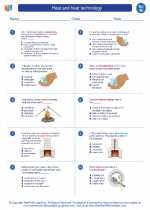Atmospheric Stability
Atmospheric stability refers to the tendency of the atmosphere to resist or promote vertical motion. It is an important concept in meteorology and is essential for understanding weather patterns and the formation of clouds and precipitation. The stability of the atmosphere is influenced by factors such as temperature, pressure, and humidity.
Factors Affecting Atmospheric Stability
- Temperature: Warm air is less dense and tends to rise, leading to unstable atmospheric conditions. Cool air is denser and tends to sink, leading to stable atmospheric conditions.
- Moisture: Moist air is generally less dense than dry air, and therefore tends to be more unstable.
- Pressure: High pressure systems are associated with stable atmospheric conditions, while low pressure systems are associated with unstable atmospheric conditions.
Stability Categories
There are three main categories of atmospheric stability:
- Stable Atmosphere: In a stable atmosphere, air parcels that are displaced vertically will tend to return to their original position. This is often associated with calm weather and little vertical cloud development.
- Unstable Atmosphere: In an unstable atmosphere, air parcels that are displaced vertically will continue to rise or sink, leading to the development of clouds, precipitation, and potentially severe weather.
- Neutral Atmosphere: In a neutral atmosphere, the atmosphere is neither stable nor unstable, and vertical motion is not strongly promoted or inhibited.
Assessing Atmospheric Stability
There are several methods for assessing atmospheric stability, including the use of atmospheric soundings, which provide data on temperature, humidity, and pressure at various altitudes. Additionally, meteorologists use stability indices, such as the Lifted Index and the Showalter Index, to assess the potential for atmospheric instability and the likelihood of severe weather events.
Study Guide
Here are some key points to remember when studying atmospheric stability:
- Understand the factors that influence atmospheric stability, including temperature, pressure, and moisture.
- Be able to identify the characteristics of stable, unstable, and neutral atmospheres.
- Learn how to interpret atmospheric soundings and stability indices to assess atmospheric stability.
- Practice applying the concepts of atmospheric stability to real-world weather scenarios, such as the development of thunderstorms or the formation of fog.
◂Science Worksheets and Study Guides Eighth Grade. Heat and heat technology

 Worksheet/Answer key
Worksheet/Answer key
 Worksheet/Answer key
Worksheet/Answer key
 Worksheet/Answer key
Worksheet/Answer key
 Vocabulary/Answer key
Vocabulary/Answer key
